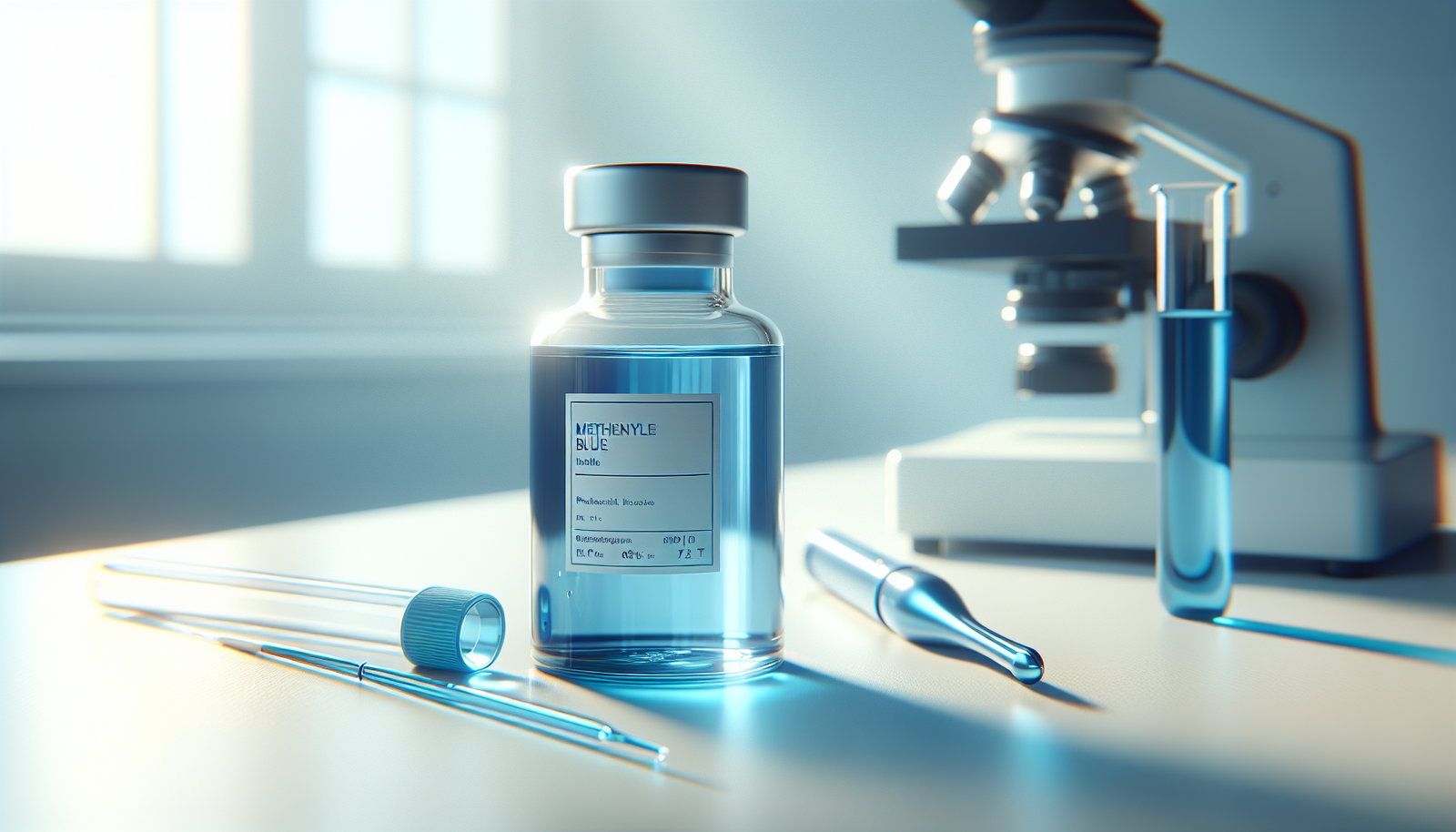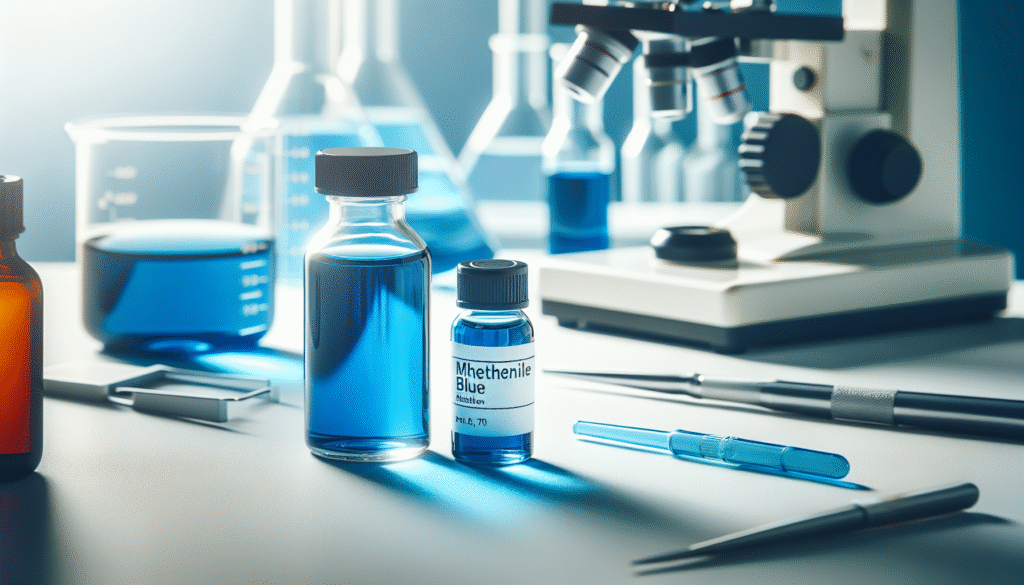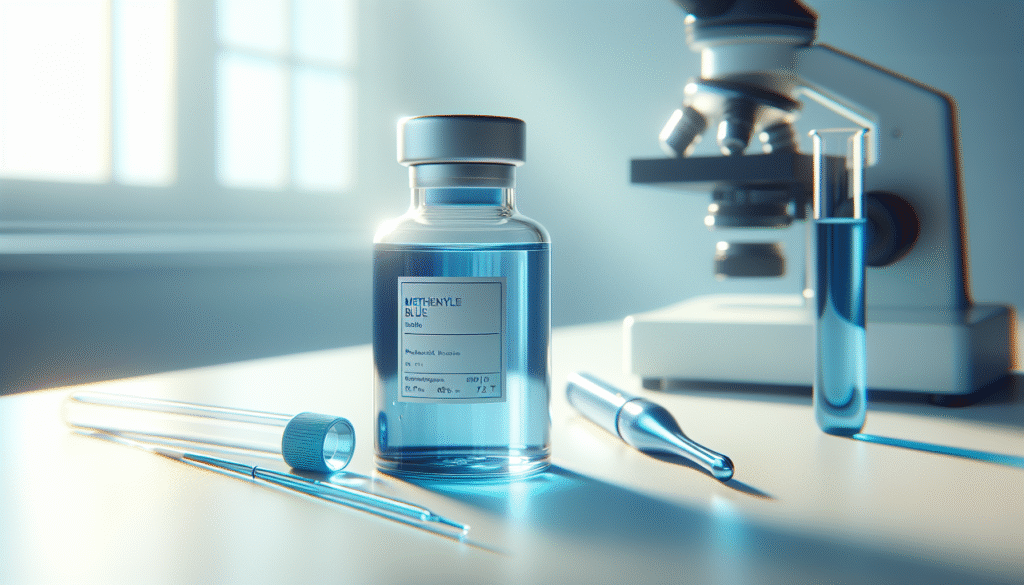
Have you ever considered the impact of innovative treatments in modern medicine? Methylene Blue, an organic compound with a rich history, may offer significant therapeutic applications. This article will delve into the most effective methods of using Methylene Blue in treatment, examining its uses, mechanisms, and implications for patient care.
Understanding Methylene Blue
Methylene Blue is a synthetic dye that was first introduced in the 19th century. Though originally developed for textile applications, it has since found numerous medical uses, including its role as a treatment for various health conditions. Understanding its pharmacological properties is essential for leverage in therapeutic settings.
Chemical Composition and Properties
Methylene Blue is a thiazine dye with the chemical formula C16H18ClN3S. Notably soluble in water, it exhibits an intense blue color, leading to its nickname. Its unique chemical properties enable it to participate in redox reactions, which become fundamental for its biological activities.
Historical Context
Methylene Blue’s journey in medicine began in the late 1800s when it was first used as an antimalarial drug. Its versatility allowed it to adapt to various roles, from treating methemoglobinemia, a condition characterized by an abnormal amount of methemoglobin in the blood, to functioning as a fluorescent stain in laboratory protocols.
Mechanisms of Action
Understanding how Methylene Blue operates on a biochemical level enhances its application in treatment. Its primary mechanism involves acting as an electron donor to support cellular respiration and enhance mitochondrial function.
Role in Electron Transport Chain
Methylene Blue can serve as an alternative electron carrier in the electron transport chain (ETC). When cellular respiration is impaired, Methylene Blue can replace depleted components of the ETC, facilitating the production of ATP, the cellular energy currency. This is particularly relevant in conditions where oxygen delivery is inadequate.
Antioxidant Properties
Another notable aspect of Methylene Blue is its ability to neutralize free radicals. Oxidative stress is implicated in numerous diseases, including neurodegenerative disorders. By combating oxidative damage, Methylene Blue may protect against cellular injury and promote recovery.

Clinical Applications
Methylene Blue has seen varied clinical applications, ranging from acute interventions to long-term treatment strategies. Its multifunctional nature provides a unique approach to managing chronic illnesses.
Treatment of Methemoglobinemia
One of the most well-established uses of Methylene Blue is for methemoglobinemia. When the body produces an abnormal amount of methemoglobin, oxygen delivery decreases, leading to cyanosis. Methylene Blue can directly reduce methemoglobin back to its functional hemoglobin form.
Administration and Dosage
Typically administered intravenously at a dose of 1-2 mg/kg, Methylene Blue is effective within minutes. Based on clinical guidelines, repeat doses may be necessary if symptoms persist.
Neuroprotective Effects
Recent studies indicate that Methylene Blue may have neuroprotective properties, potentially benefiting individuals suffering from neurodegenerative diseases such as Alzheimer’s and Parkinson’s disease. Its ability to enhance mitochondrial function may correlate with improved cognitive outcomes.
Mitochondrial Enhancement
Research has shown that Methylene Blue can improve mitochondrial function, increasing ATP production and decreasing cell death. Enhancing mitochondrial efficiency may slow the progression of neurodegenerative processes.
Antimicrobial Use
Methylene Blue exhibits antimicrobial properties, making it beneficial in treating infections. Studies suggest it may be effective against various pathogens, including bacteria and fungi.
Therapeutic Applications in Wound Care
In the context of wound treatment, Methylene Blue can be used topically to promote healing and prevent infection. Its antibacterial effects allow for reduction in microbial colonization in chronic wounds.
Dosage Considerations
When it comes to administering Methylene Blue, understanding the correct dosage is critical. The dosage can vary based on the condition being treated, as well as the patient’s individual health profile.
Guidelines for Use
| Condition | Route of Administration | Dosage | Frequency |
|---|---|---|---|
| Methemoglobinemia | IV | 1-2 mg/kg | As needed |
| Neurodegenerative Diseases | Oral or IV | Varies (starting at 60 mg/day) | Daily |
| Infectious Diseases | Topical/IV | Varies | Based on infection |
Side Effects and Precautions
Though generally safe, Methylene Blue can cause side effects; awareness is necessary for proper patient management. Common side effects may include:
- Nausea or vomiting
- Headache
- Blue discoloration of urine and skin
Methylene Blue should be used cautiously in individuals with serotonin syndrome or those on serotonergic medications.

Innovations in Research
The future of Methylene Blue in medical therapeutics looks promising, underscored by ongoing research and innovation. New application areas continue to emerge, illuminating avenues for its use.
Investigational Uses in Oncology
Recent studies are investigating the role of Methylene Blue in oncology. Its potential to induce apoptosis in cancer cells poses a unique therapeutic angle, suggesting synergistic effects when combined with traditional chemotherapy.
Potential in Pain Management
Emerging research suggests that Methylene Blue may play a role in pain management. By mitigating oxidative stress and improving mitochondrial function, it may alleviate pain associated with chronic conditions.
Future Implications
The evolving landscape of Methylene Blue will encourage healthcare professionals to consider its application in tailored treatment plans. As research continues, incorporating Methylene Blue into therapeutic regimens may become increasingly commonplace.
Personalized Medicine
As with many treatments, the ability to personalize medicine will be vital in optimizing Methylene Blue’s efficacy. Understanding patient-specific factors—genetic makeup, concurrent medications, and overall health—will allow for tailored dosing and administration strategies.
Conclusion
Methylene Blue is a valuable compound in modern medicine, showcasing its therapeutic versatility across multiple domains. From treating methemoglobinemia to offering neuroprotective benefits, its potential is vast. As innovative research continues to unfold, you may witness the increase in its application in everyday clinical practice.
The multifaceted nature of Methylene Blue underscores the significance of understanding its mechanisms, applications, and potential side effects. Consequently, maintaining an awareness of upcoming studies and advancements relevant to Methylene Blue will allow you to leverage this potent treatment effectively for the benefit of your patients. Consider the implications of Methylene Blue not merely as a dye but as a transformative agent in the realm of medical treatment.